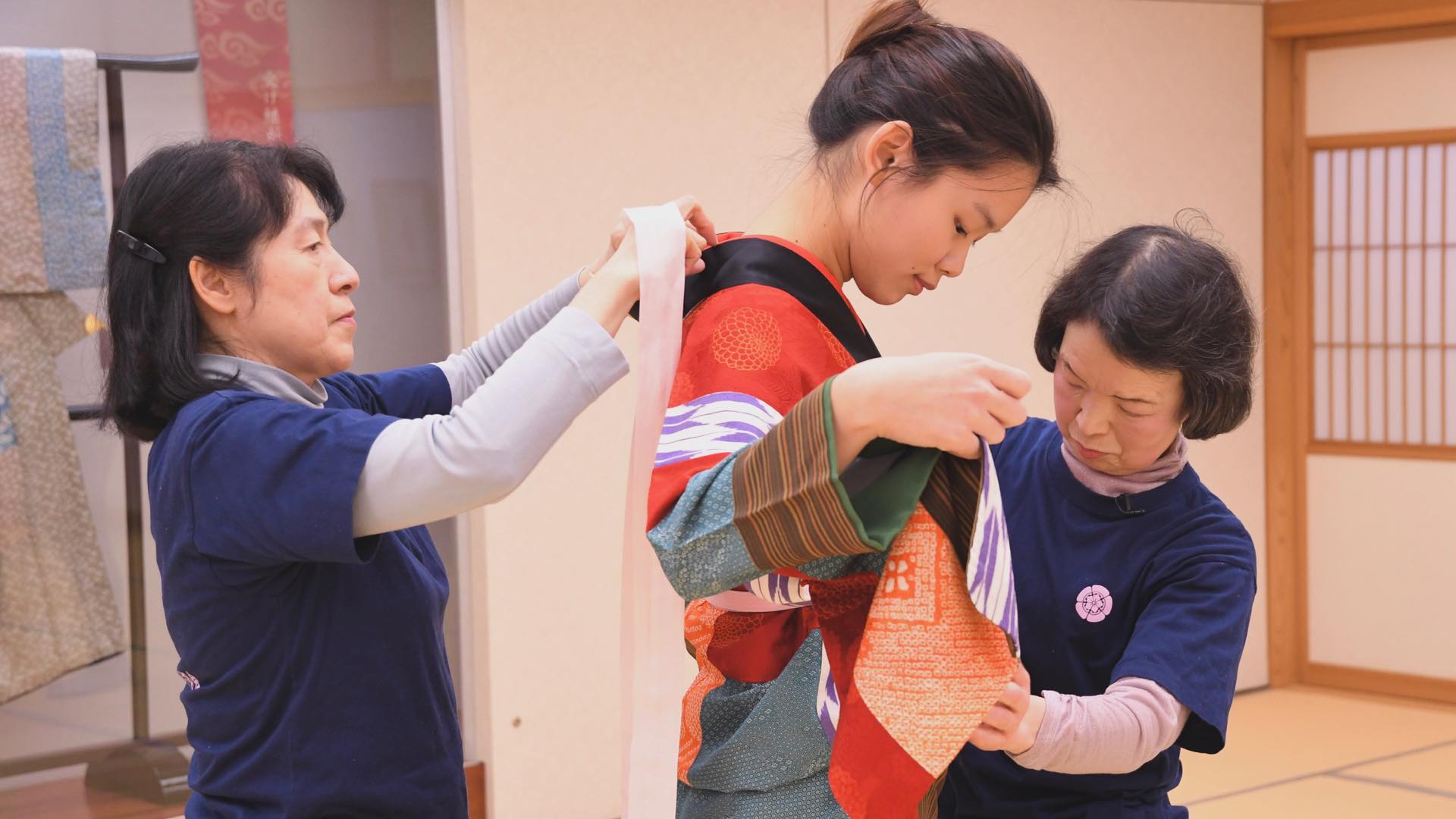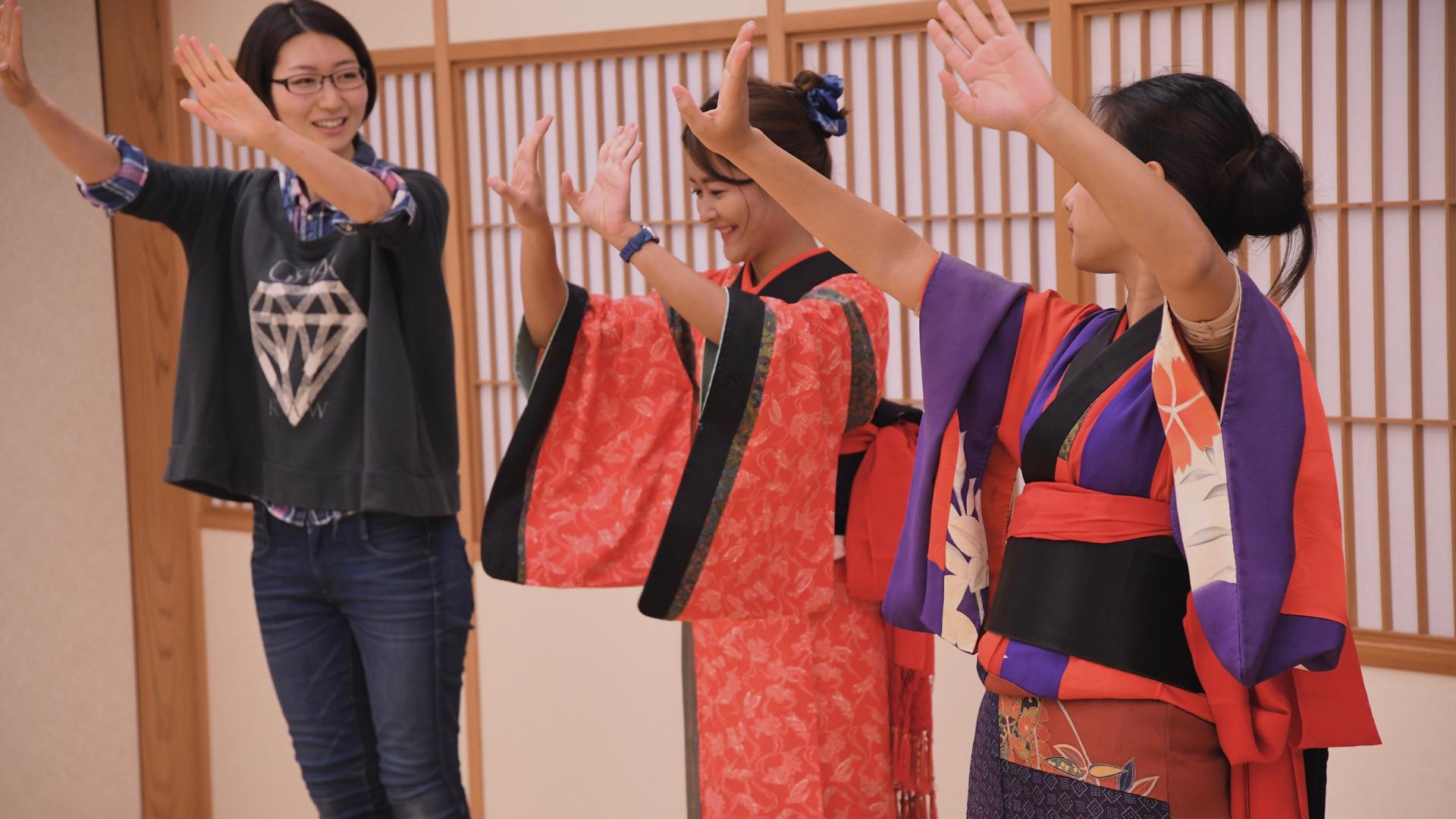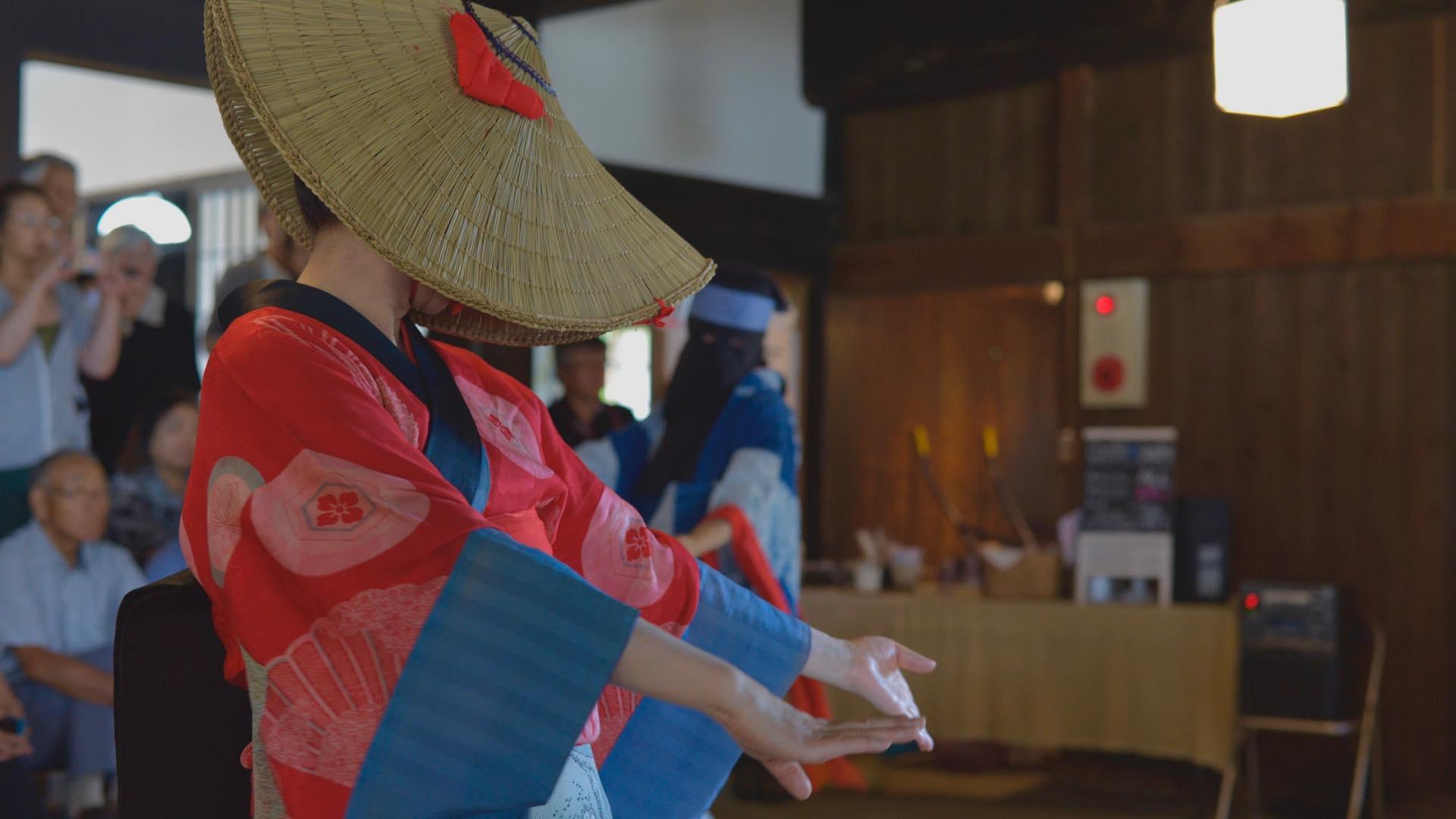What is “Bon-Odori”?
Bon-Odori dance has been practiced all over Japan in order to welcome the deceased ancestors from the other world and to this world properly at the end of August. People would dance Bon-odori circulating in a certain area. This feature originates from the Buddhist teachings of the circle of transmigration and retribution. In other words, it means that all things would flux through the endless circle of birth, death, and rebirth. It also indicates that time would go through repeating life and death.
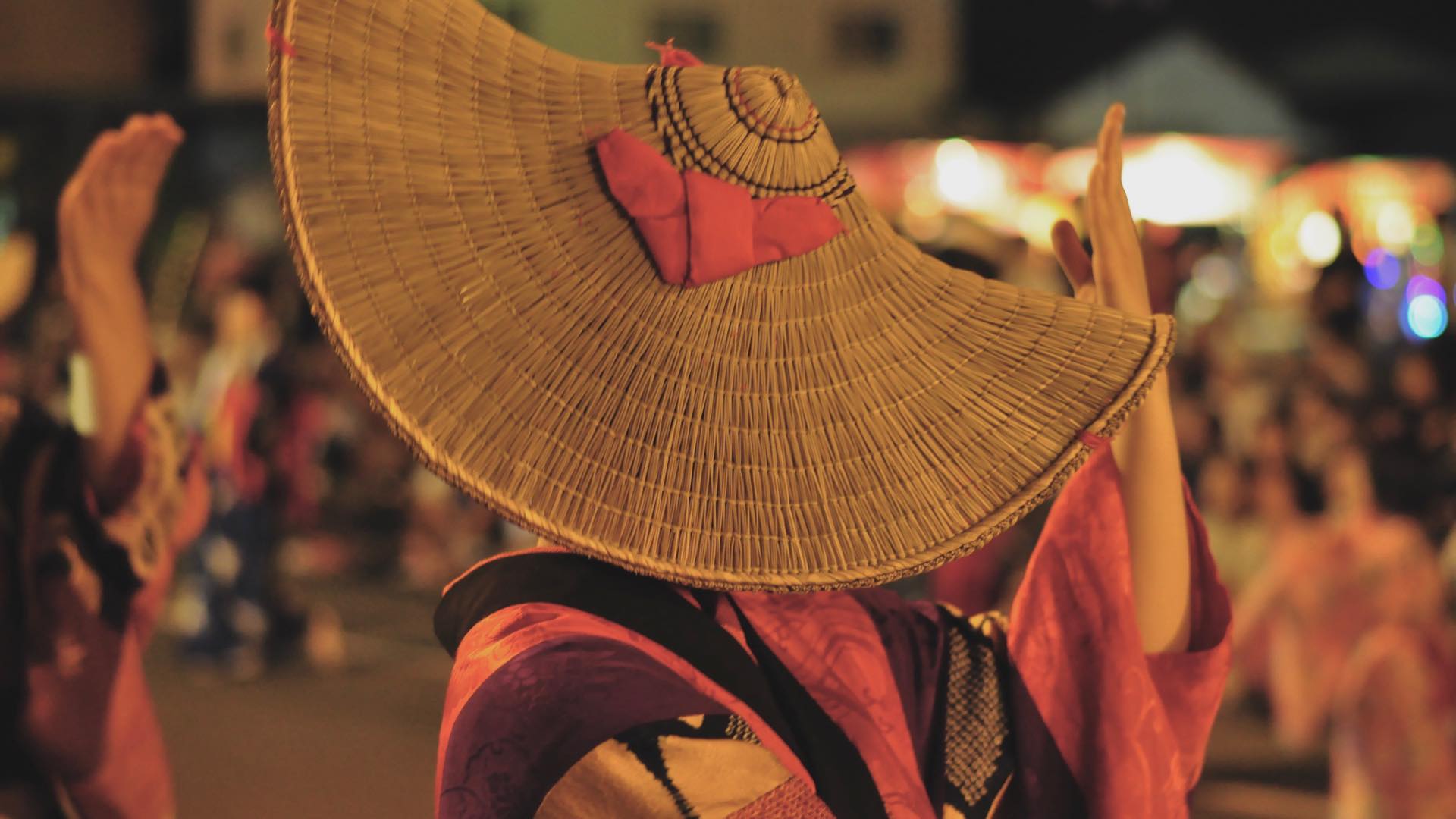
“Hare” and “Ke”
In observing Japanese culture, it can be divided into two categories. One is “Hare” or sacred happenings. Festivals would be categorized into this former type. On the other hand, “Ke” defines itself as secular or ordinary happenings and “Bon-Odori” is categorized into the latter. For example, festivals would usually take place on weekends, but as for Bon Odori, the festival would likely to extend to weekdays. This implies that Bon-Odori is an extension of daily lives.
Nishimonai Bon-Odori
In UGO ABROAD, students will learn Nishimonai Bon-Odori. It has been inherited for more than 700 years and unlike other types of Bon-odori, the traditional style is still preserved as it is. Dancers would divide into two groups; dancers wearing a plain black hood associated with the deceased in order to welcome the ancestors, and dancers wearing beautiful braided straw hat and kimono with neatly stitched seam. The dress originates from the kimono sewed together with small pieces of cloth left over which farmers made in an attempt to make a beautiful kimono. Each dress passed down to each household is still treated with minute care and inherited.
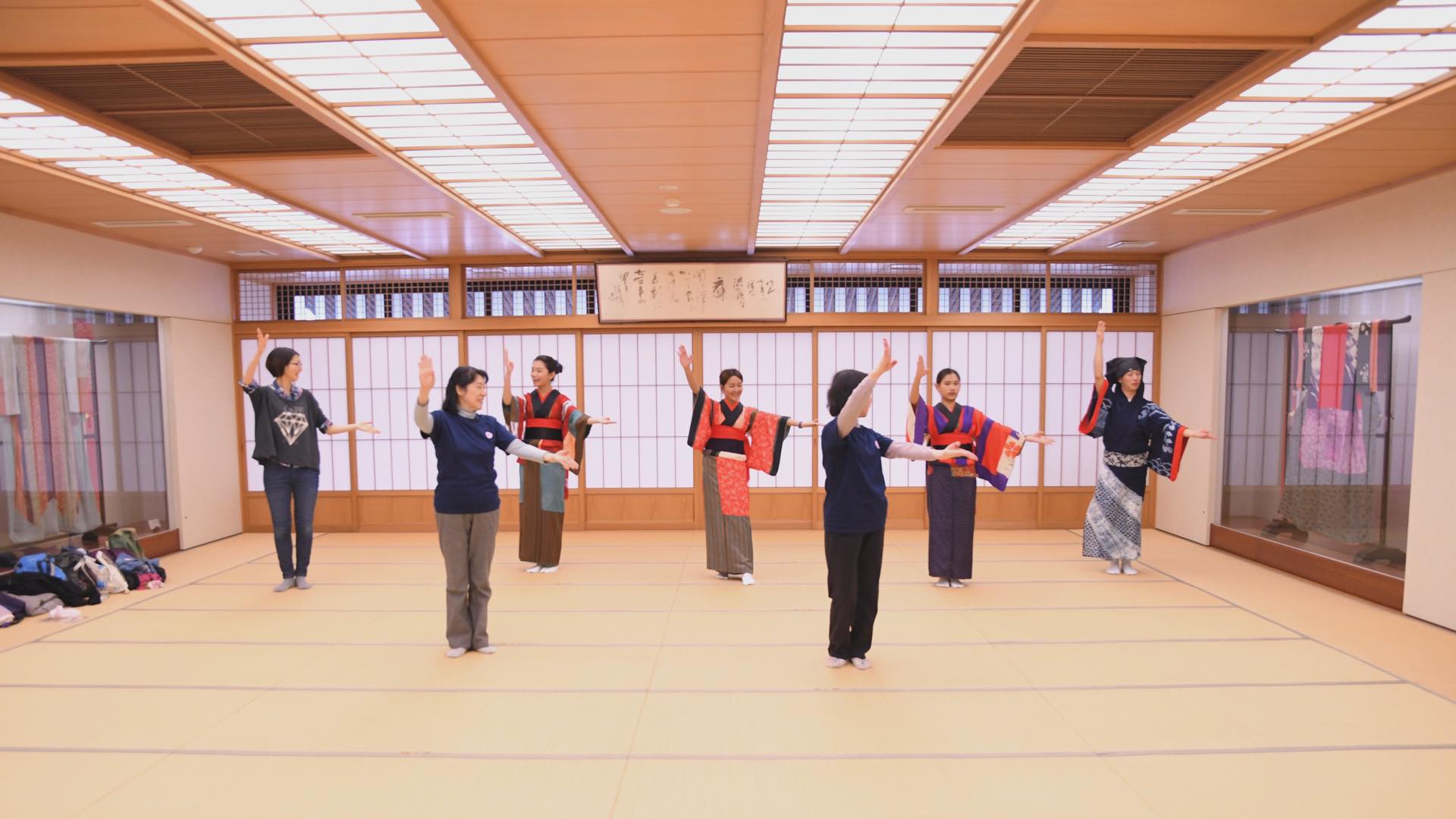
What we learn?
In UGO ABROAD, students would learn numerous things through Nishimonai Bon-Odori. Students would not only practice Bon-Odori, but also lean how to make braided hats, indigo-dye cloth used for kimono and properly wear kimono. This is the most popular aspect of UGO ABROAD. Students would be able to learn the essence of Nishimonai Bon-Odori from professionals who ordinary people cannot usually learn from.
